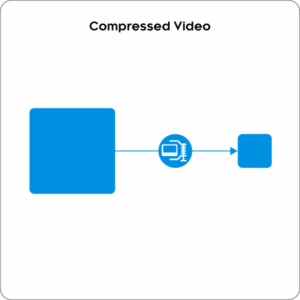Understanding Compression in Video Processing
Choosing between compressed and uncompressed video formats is crucial for balancing quality, storage, and transmission efficiency. Each format serves distinct use cases, from live broadcasting to high-end post-production.
What Is Compressed Video?
Compressed video utilizes advanced encoding techniques to reduce file size and bandwidth consumption while preserving visual integrity. Common compression standards include:
- H.264/AVC – Widely used for streaming and broadcasting, offering efficient compression with minimal quality loss.
- HEVC/H.265 – Delivers superior compression rates compared to H.264, optimizing bandwidth for 4K and HDR content.
- JPEG2000 – Used in digital cinema and high-end media transport, supporting visually lossless compression with scalability.
Compression works by removing redundant data, leveraging predictive encoding, and optimizing spatial-temporal redundancies to enhance transmission efficiency.
